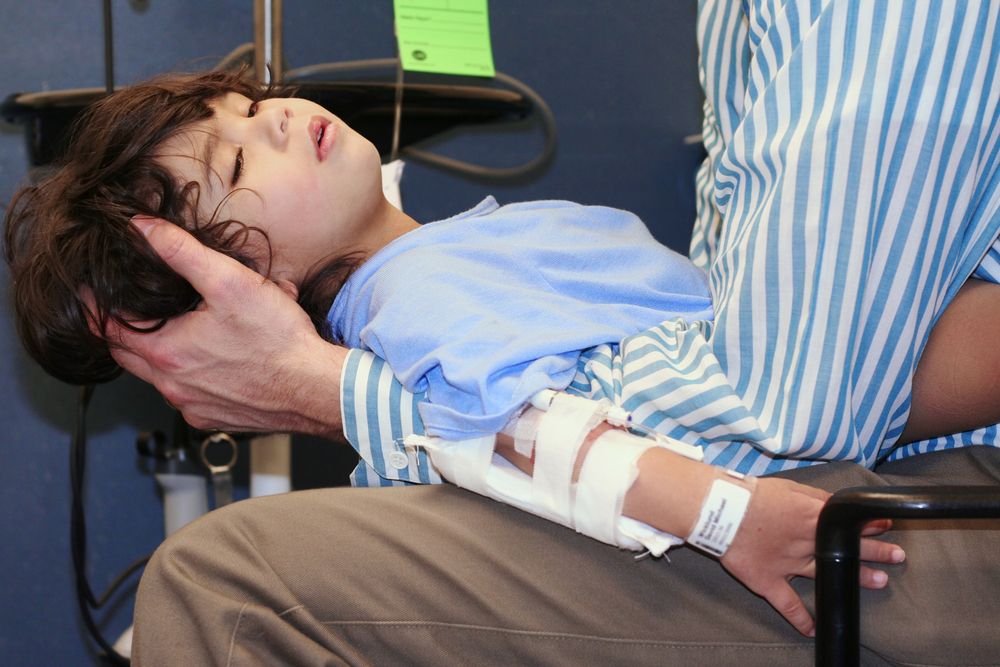Article
Distinguishing Stroke From Migraine and Stroke Mimics
Author(s):
While migraine is distinct from stroke in its gradual onset and lack of focal motor weakness, it is also a predisposing factor for childhood stroke. That can raise the question, “Is it another migraine or is it actually stroke this time?”
©JarenJaiWicklund/Shutterstock

A pediatric stroke protocol implemented in the emergency department (ED) may improve timely identification of neurological deficits but may not reliably distinguish between stroke and stroke mimics like migraine and seizure, according to a study by DeLaroche and colleagues1 of the Children’s Hospital of Michigan in Detroit.
“Overall, our results demonstrate that there is a wide spectrum of disease states that can present with stroke-like features in children. Although children with stroke-like symptoms are more often diagnosed with a benign entity, up to 41% of patients have a clinically significant diagnosis,” wrote first author Amy Delaroche, MBBS.
Though further refinement is needed, the study suggests that stroke protocols may still be important for speeding time to imaging and therapy for stroke as well as other more serious stroke mimics.
This issue is important given the fact that pediatric stroke often goes underdiagnosed, with significant delays in imaging and initiation of treatment. Current bedside tools do not reliably distinguish pediatric stroke from its mimics. Only about 25% to 30% of children with acute neurological deficits are ultimately diagnosed with stroke, according to studies quoted in the article.
Moreover, the diagnosis can be muddied by other neurological problems whose symptoms overlap with stroke. Common stroke mimics include seizures, focal neurological deficits, transient neurological deficits, headache and migraine.
Migraine, in particular, can be tricky because many children have nonspecific symptoms, such as vertigo and dizziness. While migraine can often be distinguished from stroke by its gradual onset and lack of focal motor weakness, migraine is also a predisposing factor for childhood stroke. That can raise the question “Is it another migraine or is it actually stroke this time?”
To see whether diagnosis of pediatric stroke can be improved, researchers at the Children’s Hospital of Michigan in Detroit implemented a pediatric stroke clinical pathway in their level 1 pediatric ED. The protocol emphasized expedited neuroimaging, with requisite lab studies for the pediatric ED, and guidelines for neuroprotective strategies.
The protocol was triggered in 59 children aged one month to 18 years who presented to the pediatric ED within 72 hours of symptom onset and with a positive “stroke screen.” A positive stroke screen consisted of one or more of the following:
• Sudden onset focal neurological deficits (motor or sensory)
• New onset seizure with persistent focal neurological deficit
• Unexplained changes in mental status, with a risk factor for stroke
A stroke mimic was considered sudden onset neurological deficit reminiscent of stroke, but with stroke ruled out on MRI.
Key results
• 23.7% of children who triggered the pathway actually had stroke
Stroke linked to 4 times higher odds of vomiting
Weakness not linked to stroke
• Most common stroke mimics:
Functional neurological disorders: 20%
Transient neurological deficits: 17.8%
Migraine: 15.6%
Seizure: 11.1%
Results also showed no differences between stroke and stroke mimics in time to neuroimaging (CT or MRI), or physical exam.
The authors noted that the low yield of the pediatric stroke protocol is similar to other studies. Results differ markedly from adult studies of acute stroke protocols which may identify up to 75% of patients with stroke.
“Because acute neurological deficits in children can signify both benign and nonbenign entities, further multicentered studies are needed to develop a “stroke screen” that reliably distinguishes pediatric stroke from its mimics, with the aim to provide timely care to all children with clinically significant etiologies for their acute neurological symptoms,” they concluded.
The study took place at a single institution with continuous pediatric neurology and radiology coverage, so results may not apply to other settings with more limited services.
Take home points
• Single center study found that about 24% of children who triggered a pediatric ED stroke protocol actually had stroke
• The most common stroke mimics were functional neurological disorders, transient neurological deficits, migraine and seizure
• A pediatric stroke protocol can improve time to evaluation and treatment of stroke and serious stroke mimics, but has low yield for distinguishing between stroke and stroke mimics
• Further studies and refinements are needed to improve pediatric stroke protocols
References:
1. DeLaroche AM, Sivaswamy L, Farooqi A, Kannikeswaran N. Pediatric Stroke and Its Mimics: Limitations of a Pediatric Stroke Clinical Pathway. Pediatr Neurol. 2018;80:35-41.





